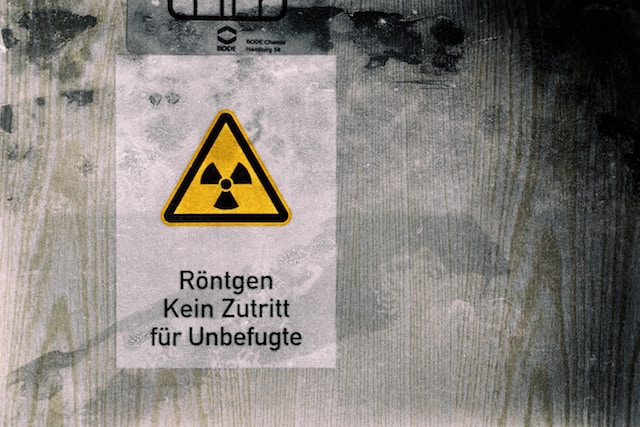By Chris James, Contributor
The power industry is facing a nuclear power dilemma, according to a report published by The Union of Concerned Scientists. UCS assessed the economic viability and performance of nuclear power plants operating in the United States and concluded that the retirement of these plants will likely result in the adoption of coal and natural gas for baseload power generation, two energy sources that contribute to carbon dioxide emissions.
In this post, I contemplate the “nuclear power dilemma” referred to in the UCS report and what the dilemma might mean for the adoption of energy storage technologies.
Nuclear Power In A Nutshell
Nuclear power is produced via a nuclear fission process that heats water and runs steam turbines; that energy is transferred to the grid. Nuclear power is a proven reliable generation method albeit somewhat dangerous—the byproducts created in the process are difficult to dispose of and are a public health hazard if released. History shows us that nuclear plant failure has been catastrophic for the surrounding regions. The upside is that nuclear power doesn’t contribute to global warming in the way that fossil fuels do.
The Dilemma Is Our Dependence
Among other baseload sources, the grid relies on the consistent generation produced by nuclear power plants. One reactor can put out a gigawatt of power day and night. This baseload generation has historically been keeping the grid’s frequency stable.
Germany is an example of the nuclear dependence dilemma. As a reaction to the Fukushima disaster in 2011, the German government decided to phase out its nuclear power stations despite its high reliance on the power. The country still needs baseload generation, so their power industry is turning back to coal and natural gas (exactly the problem identified in the UCS report). The drawback of coal is the high emissions produced. Natural gas however, is an expensive alternative for Germany. The country has had to purchase it from Russia, creating dependence on Russia.
Low carbon options besides nuclear include wind, solar and hydropower. Unlike nuclear power, these alternatives are not consistent producers of electricity. Renewables have variable energy availability, whereas one nuclear plant has predictable output. How do we replace baseload generation with alternatives that lack consistency?
How Energy Storage Supports A Post-Nuclear Power Grid
If we truly phase out nuclear power, and at the same time continue the shift of energy production from conventional sources to more intermittent renewables, we will need an enormous amount of energy storage to give grid operators the ability to buffer variable sources and store up for times when production is low to non-existent. Studies vary in their predictions for how much storage will be necessary as the energy sources of the power grid change, but it is clear that energy storage is becoming more and more critical to maintain grid stability as we reduce our reliance on fossil fuels, and nuclear power.
In striving to replace nuclear baseload generation, a massive energy storage system such as pumped hydro or similar would ideally be paired with the variable sources. That way, when the solar farm is in high production, the hydro plant could pump water to the elevated reservoir, and when solar production is down, the water would flow through turbines to the lower reservoir, producing energy for the grid. The benefit of pumped hydro power is it is the cheapest large-scale energy storage technology available in some regions. However, its operation is not as consistent as a nuclear power plant, so it would need to be coupled with grid stabilization technologies very likely utilizing battery and or ultracapacitor-based energy storage systems.
In a post-nuclear power grid, energy storage would contribute as a supportive technology that would help the transition from traditional baseload generation to variable sources such as solar and wind. There are several energy storage methods, including batteries, ultracapacitors (supercapacitors), and flywheels, and various applications in which these technologies play.
In the example of pumped hydro, ultracapacitors could be efficiently paired with the facility to provide continuous grid stabilization. For the solar farm, energy storage can contribute to time shifting—since the solar farm only produces PV energy during the day, the energy storage can make surplus energy available to the grid in the evening hours.
For a highly cyclic industrial load that continuously pushes and pulls power from the grid, ultracapacitor energy storage can stabilize the energy locally so that the grid is not affected by the instability. (For example, the electric crane in Kodiak Island’s microgrid.)
This local buffering concept is of increased importance when large loads are placed on microgrids. Microgrids have limited inertia, and ultracapacitors coupled with appropriate power electronics can be used to add synthetic inertia to stabilize frequency, provide voltage support and smooth renewable power output.
Energy storage certainly has a space to fill in the face of the nuclear power dilemma. As of yet, the electrochemical/electrostatic energy storage technologies available to us cannot be economically built to the scale of baseload generation plants such as hydro and nuclear. Although it is not a like-to-like replacement of nuclear power, energy storage systems based on battery and ultracapacitor technologies support grid reliability in various applications and are useful tools that can aid grid operators in the transition from traditional baseload generation to renewables.
From the overwhelming amount of evidence produced by our scientific community, it is clear that we need to keep striving for reduced carbon output of our energy infrastructure. To this end, we need to learn how to build hybrid energy storage systems which assist us in cost effectively utilizing variable sources while maintaining grid stability as we continue our move towards a low carbon future.
Chris James is senior firmware engineer at Maxwell Technologies. He holds a B.S. in electrical engineering from Michigan Technological University.
POWERGEN 2019 explores the future of energy. We’re accepting abstracts right now. Submit your speaking idea and learn more about the event here





